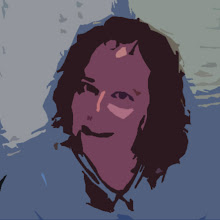Inspiration can come from the most interesting places. A beach at sunset, a forest with the late afternoon sun piercing through the tree tops, a New York City housing project ...
"What?" you ask. A housing project? Yes, indeed.
After I drop my son off at pre-school, I walk down Nostrand Avenue to pick up my car from wherever my husband has parked it that day (stopping off first, of course, at Dunkin Donuts for a infusion of caffeine). My walk brings me past the Sheepshead Bay/Nostrand Houses, a 34-building New York City Housing Authority development built in the late 1940s.
The development is designed in the "modernist, tower-in-the-park style" popular during the post-war decades. The buildings are blocky, 6-story red brick, set among emerald lawns planted with oak, sycamore and young fruit trees.
At various corners and entrances, there are red brick columns with stone finials. Set into the brickwork are bas-relief squares with stylized oak leaves.
Something about those oak leaves really caught my attention one morning. The way the early-morning sun emphasized the shadows and highlights made me think of Aran sweaters, and all those lovely textured cables. I got an inspiration for a sweater..
Now, I'm no fashion designer, and I'm even less of an illustrator. But this sweater nagged at me. And I knew that if I didn't put something down on paper, I would lose the idea before I was ready to knit it. So off to the library I went, to borrow books about figure drawing for fashion design. And with a lot of tracing paper, a ton of patience, and much erasing, I came up with the following sketch:
It's hardly Project Runway material, but at least I have a starting point. Now all I have to do is figure out how to actually design the sweater, and I've got it made.


















